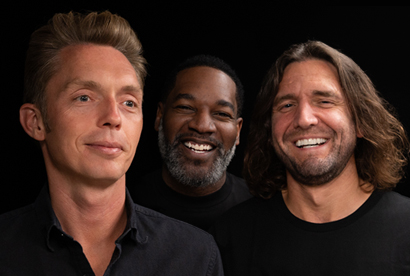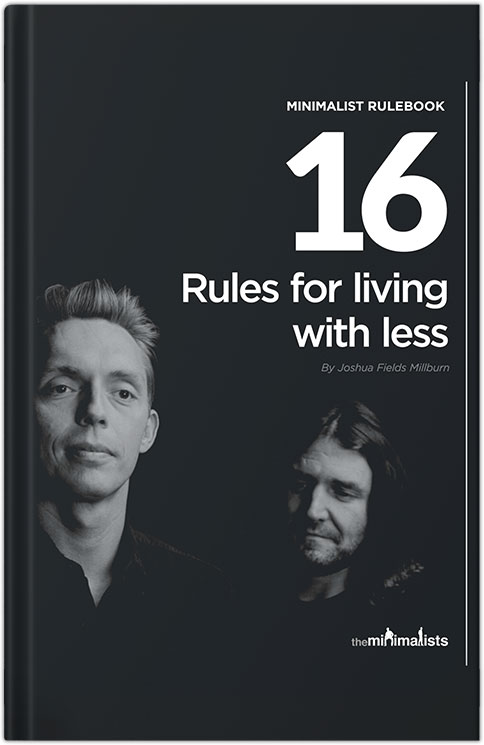I am standing in line at my favorite cafe, surrounded by smells and sounds. An uptempo milieu of acoustic guitar and tambourine is occupying the atmosphere around me, an Andy Davis tune, and I’m singing along—”It’s a goooo-oood life”—like a tone-deaf idiot, missing every-other note, mumbling the words I don’t know while looking out the large window to my left, staring into the blankness of the morning. It’s the first week of spring, but Missoula has yet to receive the memo. Everything outside is blanketed white, so clean and absolute.
I smell coffee. The smell alone is a near-religious experience. The cafe’s manager, Jerod, is perched behind a large, shiny espresso machine, manning the military-grade controls, pulling and twisting levers and knobs at precise intervals as the mammoth appliance emits the grinding and whisping sounds associated with good coffee. I imagine Jerod has more than one engineering degree. The whole scene is impressive in the way a kid breakdancing on the street is impressive; it’s completely foreign to me, but I’m mesmerized. How could you not be?
People’s faces change, visibly brighten, when they enter the cafe’s main room, kicking snow from their boots and brushing melted flakes from their parkas. Their postures autocorrect under the high ceilings; the average height of each patron seems to increase at least half an inch as they stand in line, bathed in natural light and coffee aroma.
Jerod makes the best Americanos in Montana—the best. Behind the machine, he’s wearing a three-piece suit and a contemplative look that says he’s serious about his coffee but somehow simultaneously not so serious that he doesn’t know how to have fun. If I tried to affect the same expression, the customers behind me would surely call 911, thinking I was having a mild stroke, but Jerod pulls it off with cool confidence, a professional among professionals, joyed by his labors.
It’s my turn to order: Americano, black. The dark-haired girl at the register is wearing a smile I’d like to frame. She’s intimidatingly attractive, and so I fumble for something clever to say when she asks me how I’m doing. But I’ve got nothing, no words—my mouth, a swordless sheath.
I pull out my wallet to pay, peeling a few singles from my thin stack. I don’t even consider using my credit card—not anymore at least. The snow keeps calm everything outside the windows, huge flakes like wet chips of white paint peeling off the sky. Cash—not a debit card, but cold hard cash—is the only currency I use these days; it’s harder to part with, makes me cerebrate over each purchase. Every dollar I let go of is like letting go of $1 of my freedom. I place a dollar in the jar labeled “tipping is sexy” and smile at the brunette.
But I haven’t always been this way. (Well, I’ve always smiled at brunettes, but I haven’t always been responsible with money.)
I’ll be 32 in a few months, and for the first time in my adult life, I’m free of debt. That’s a weird thing for me to be able say. You see, from the time I was 18—when Chase Bank granted me my first line of credit, a MasterCard with a $5,000 limit, which would’ve made any poor kid from Ohio salivate—until last month, nearly 14 years later, I’ve had some sort of debt. As my twenties mounted, so did my tab with the creditors.
First it was just that one credit card, and then, when that one was maxed out, it was two. And then three. Visa, MasterCard, even Discover. (American Express wasn’t irresponsible enough to grant me a line of credit, not for several years at least.)
But that’s OK, I was “successful,” so I could afford it, right? Fresh out of highschool, I skipped the whole college route and had instead found a sales job that “let” me work six, sometimes seven, days a week, 10–12 hours a day. I wasn’t great at it, but I learned how to get better. By age 19 I was making $50,000 a year. But I was spending $65k. Unfortunately, I was never great at math. Perhaps I should’ve financed a calculator before maxing out half-a-dozen cards.
I celebrated my first big promotion at age 22 the same way I imagined anyone would: I built a house in the suburbs, financed with 0% down. Everything in my culture reaffirmed this decision, even told me I was making a solid investment (this was five years before the housing crash). It wasn’t just any old house, though; it was an oversized, two-story monstrosity, complete with three bedrooms, two livingrooms, and a full-size basement (the ping-pong table I never used came later, also financed). There was even a white picket fence. I shit you not.
Soon after building the house, I married a wonderful woman. But I was so hyper-focused on my supposedly impressive career that I hardly remember the ceremony. I know it rained that day, and that my bride was beautiful, and I remember fleeing to Mexico for our (financed) honeymoon after the wedding, but I can’t recall much else. When we returned, I got back to work, filling our two-car garage with luxury cars and our new home with fancy furniture and appliances, stacking debt on top of more debt in the process. I was on the fast track toward the American Dream, just a few years ahead of my contemporaries, who were all spending likewise, albeit five-or-so years later, in their late twenties. But I was ahead of the curve, an exception, right?
At 28, a decade into my accumulation, I was forced to look around at all the stuff surrounding me. It was everywhere. My house was full of things I’d purchased in an attempt to find happiness. Each item had brought with it a twinge of excitement at the check-out line, but the thrill always waned shortly after each purchase, and by the time the credit-card statements arrived, I was overwhelmed with guilt, a strange kind of buyer’s remorse. And so I’d do it all over again, soaking in the suds of consumption—lather, rinse, repeat—in search of something that resembled happiness, an elusive concept that got farther and farther away the more I chased it.
Eventually, happiness was just a speck on the horizon, way off in the distance.
Turns out that I’d been running as fast as I could in the wrong direction. Oops. The stuff wasn’t doing its job; it wasn’t making me happy. In fact, the opposite was true: instead of happiness, I was faced with stress and discontent and anxiety. And massive, crippling debt. And, eventually, depression. I no longer had time for a life outside of work, often laboring 70–80 a week just to pay for the stuff that wasn’t making me happy. I didn’t have time for anything I wanted to do: no time to write, no time to read, no time to relax, no time for my closest relationships. I didn’t even have time to have a cup of coffee with a friend, to listen to their stories. I realized that I didn’t control my time, and thus I didn’t control my own life. It was a shocking realization.
What I did with that revelation, however, is much more important than the revelation itself. Faced with epiphany, I turned around and started walking—not running—in the right direction. I spent two years living under new spending standards, what I refer to as my Ramen Noodles Meal Plan, slashing all my nonessential wants and likes along the way: I sold the big house (at a significant post-crash loss) and moved into a small apartment; I paid off my car and kept driving it without considering a new one; I cut up the credit cards and started paying for everything with cash; and I bought only the things I needed. Ultimately, I discovered that I needed far less than I’d thought I did. For the first time in my life, I could see happiness getting closer and closer as I walked away from the stuff and toward real happiness. My friends and family started noticing my changed demeanor, too. Over time, life was calmer, less stressed, simpler.
I spent time paying off debt, incrementally, month by month, bill by bill, getting rid of everything superfluous so I could be less tied to my income, less tied to a job that ate all my time. I didn’t simply jump up and quit my job, though. That would’ve been stupid. Instead, it was a long road. It took two laser-focused years to eliminate 80% of my debt, and after I left my career as I approached age 30, I took a sizable pay cut, but I still focused on paying down the debt, spending two years slapping around that remaining 20%, never losing sight of the freedom that hid behind it.
Today I’m seated at a table by the window, sipping an Americano that I paid for with cash, thumbing through pages of the Missoulian (also paid for with cash). I glance up from the pages periodically, watching the white streets become enveloped by more white. It’s like the opposite of a Hitchcock film out there, all hope and promise, a beautiful cleansing. Eventually I see Ryan enter the cafe’s doors, a huge, goofy grin on this face, snow caked to his eyebrows, his hair untamed. He looks like he has a good story to tell. I’m waiting to hear it. I’ve got the time.
“Debt-Free” is an excerpt from Everything That Remains.
You May Also Enjoy
How to Start a Successful Blog TodayLearn how to start a blog in less than an hour. Follow the step-by-step instructions we used when starting our blog, which now has reached more than 20 million people. Creating this blog is one of the best decisions Ryan and I ever made. After all, our blog is how we earn a living. More important, it's how we add value to other people's lives. Read more
30-Day Minimalism GameLet's play a simple game together. We call it the 30-Day Minimalism Game. Find a friend, family member, or coworker who's willing to minimize their stuff with you next month. Read more
11 Ways to Write BetterWe are all writers now. Whether you write books, blog posts, emails, Instagram captions, or text messages, you are a writer. No matter your preferred medium, here are a few tips to help you write more effectively. Read more


